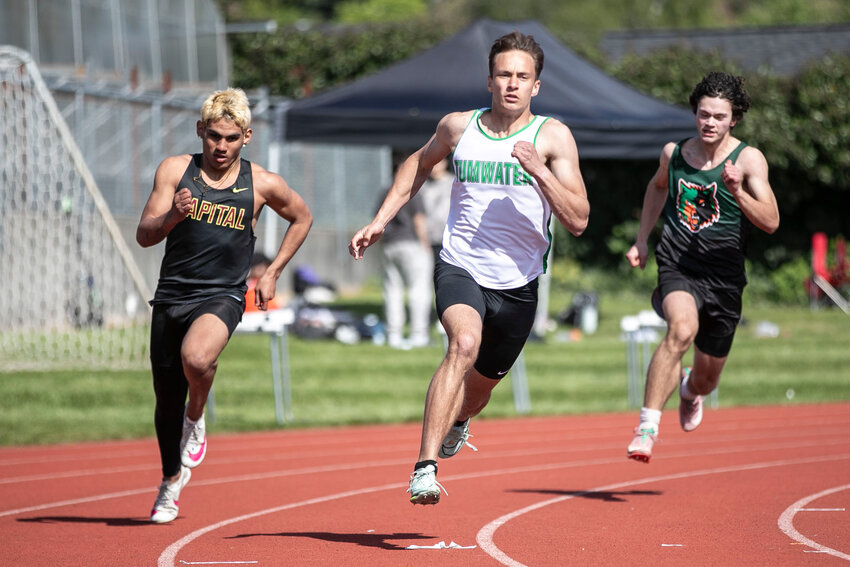Indigenous ranger groups from across the remote reaches of Arnhem Land have gathered to plan their massive annual savanna burn, as the Northern Territory's dry season begins. The Jawoyn rangers have already completed aerial work, where fire is dropped from helicopters on some of their country near Katherine. Other groups, like the Yugul Mangi rangers from Ngukurr, will have to wait a while longer for their land to dry out.
The annual burn is a hazard reduction strategy that combines traditional Indigenous fire practices with modern technology, including live fire mapping data from the Northern Australian Fire Information Service (NAFI). Tristin Maroney says the NAFI mapping service is a helpful tool for Aboriginal rangers. "The maps for us are really helpful," said Tristin Maroney, coordinator of the Jawoyn rangers.

"It holds the data for us ...
to see how we've done our burn, we go back to the maps and see when the burn started and where it finished." In the tiny Aboriginal community of Banatjarl, about an hour from Katherine, the ranger groups huddle over highly detailed print-outs of NAFI maps, to figure out which patches of country have gone the longest without a burn. Aboriginal rangers like the Mimal rangers review the fire maps to determine which areas need controlled burning.
But it's the live version of the fire map that's perhaps the most valuable tool. "They want to know, if a fire is heating for a particular bit of country, is there a break in there?" said Peter Jacklyn, manager of the NAFI service. "Have they already burnt that country so it'll pull a fire up, or is there a gap? If there's a gap, they might send a chopper in, and the chopper will go and fix the gap.
" The map is managed by Charles Darwin University and based on satellite data across four jurisdictions, which is interpreted by a small team of researchers. But the service, which is also used by pastoralists, is under threat with its funding due to run out on June 30. Mr Jacklyn said the service costed "less than a million dollars" each year to run.
The NAFI fire mapping service is managed by Charles Darwin University. Until now, it has been largely funded by the federal government on short-term agreements. The last bucket of money, awarded in July last year, was $588,000 for the 2024/25 financial year.
But the service operators became concerned when the most recent federal budget did not include any new funding. Responding to questions put to federal Labor, a spokesperson for the Commonwealth's National Emergency Management Agency said it "appreciated the value" of the NAFI map. But they did not commit to further support, saying NAFI would need to do "market research" and consider seeking private investment or funding from state and territory governments.
The NAFI mapping service is also used by Bushfires NT. While the future of the NAFI map remains uncertain, the rangers can't afford to lose any time in planning their early burns. The cool burning program goes further than just reducing the overall fuel load — it also protects sacred sites and natural resources important to Aboriginal people.
"We want to protect our bush medicine, bush tucker and all the rare animals," says Jana Daniels, a senior Yugul Mangi ranger. Jana Daniels (right) says protecting bush tucker, bush medicine and native animals is key to the rangers' work. This year, the rangers will conduct burns around an area rich in native black berries that they are keen to protect from fire.
The groups "rely on choppers" to manage the vast areas, but Ms Daniels says there are some areas that are better reached on foot. Warren Curtis, of the Mimal ranger group from central Arnhem, says it's during this kind of groundwork that his colleagues tap into their traditional knowledge of country. "Sometimes you think you're in the middle of nowhere.
But these people are really good — the tracks that are in their mind, they know exactly where they are at all times," Mr Curtis said. The annual savanna burn is a hazard reduction strategy that is based in traditional Indigenous fire practices. Stephanie King, the manager of the Arnhem Land Fire Abatement project, said the live NAFI map would become especially important later in the season, when the rangers switch gear into active firefighting.
Burning cooler fires at the start of the dry season also emits less carbon than allowing hotter bushfires to take hold later on, which allows the Arnhem Land burning program to generate certified carbon credits. Those credits are then purchased by companies to offset their emissions. Maps from NAFI are a vital resource for the ranger groups, both for their planned burns and for firefighting.
Mr Jacklyn said the loss of NAFI maps would make it much harder to prevent large-scale bushfires, which could put the carbon credit scheme at risk. "The less wildfires there are, the more carbon credits they earn," Mr Jacklyn said. "We need to get the funding sorted reasonably quickly, after the election is over.
".
Top

Vital firefighting tool at risk as northern Australia enters fire season
A live fire mapping service, used by Indigenous rangers, firefighting agencies and pastoralists in northern Australia, is on track to run out of funding during the region's peak fire season.











-1745121369054_v.webp)